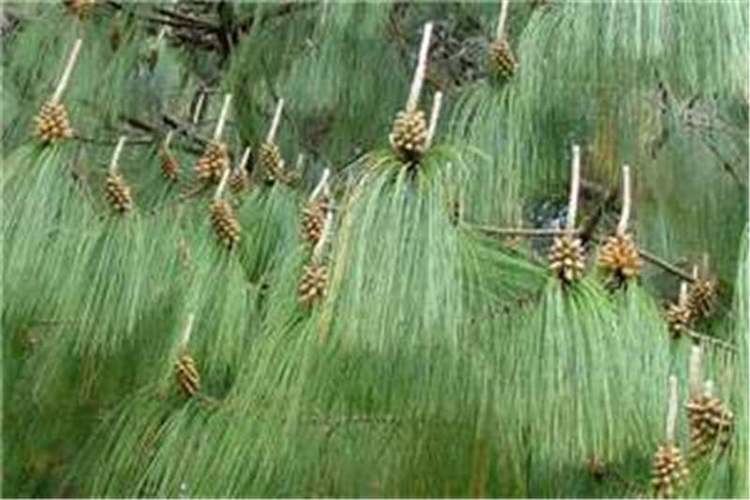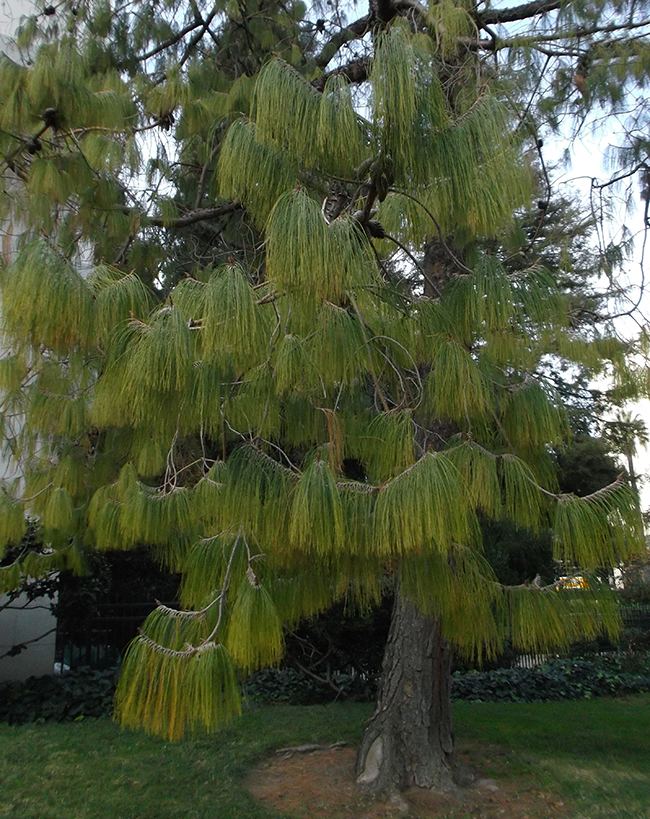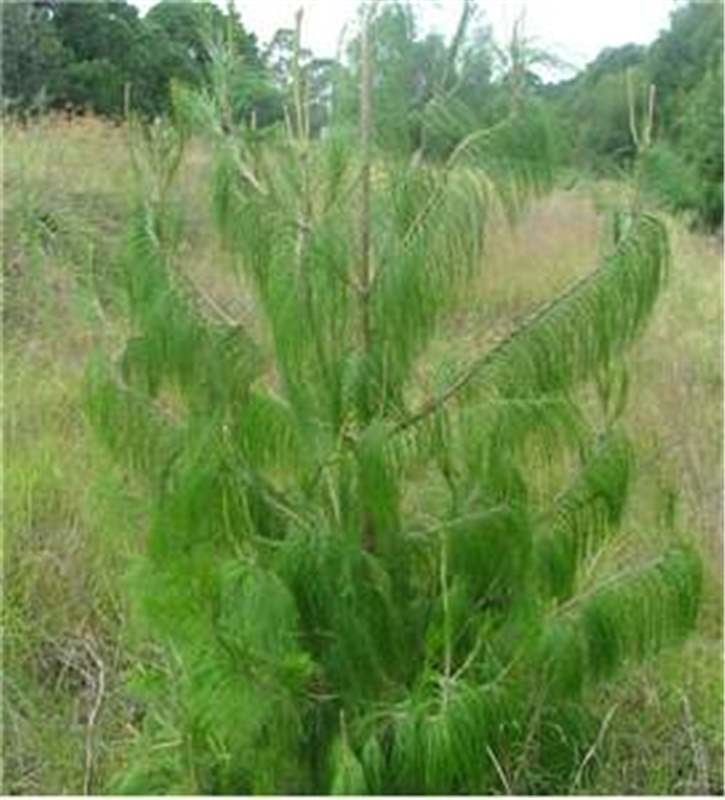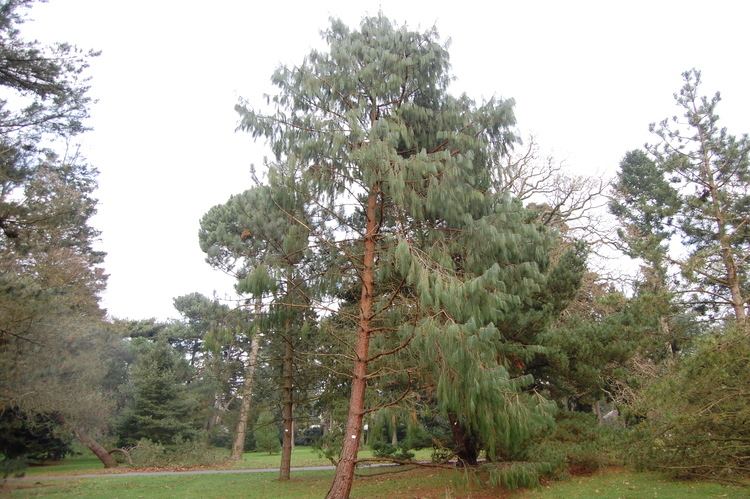Genus Pinus Scientific name Pinus patula Rank Species | Division Pinophyta Subgenus Pinus Higher classification Pinus | |
 | ||
Similar Pine, Pinus oocarpa, Pinus pseudostrobus, Pinus tecunumanii, Pinus montezumae | ||
Plant id mexican weeping pine pinus patula
Pinus patula, commonly known as patula pine, spreading-leaved pine, or Mexican weeping pine, and in Spanish as pino patula or pino llorón, (patula Latin = spreading) is a tree native to the highlands of Mexico. It grows from 24° to 18° North latitude and 1800 to 2700 m above sea level. The tree is 30 meters tall. It cannot not stand long periods of temperatures as low as –10 °C, but resists occasional brief below zero dips. It is moderately drought-tolerant, in this respect it is superior to Pinus taeda. Rainfall range is from 750 to 2000 mm annual average, it happens mostly in summer but in a little area of the State of Veracruz on the Sierra Madre Oriental its habitat is rainy year round.
Contents

It is planted at high altitudes in Ecuador (3500 m), Bolivia, Colombia (3300m), Kenya, Tanzania, Angola, Zimbabwe, Papua New Guinea, and Hawaii (3000 m). In Hawaii it is replacing the native alpine grassland.

At lower altitudes than its origin country it is cultivated in Southern Brazil, South Africa, India, and in the Argentine provinces of Córdoba and San Luis. it is planted for forestation purposes in lands originally covered by bushland.

It has been introduced near sea level in New South Wales, Australia, where it spreads naturally by wind and is very favored because rainfalls are more abundant in summer. It was also introduced in New Zealand for commercial purposes and is fully naturalized there. It is cultivated in the United Kingdom as an ornamental tree for parks and gardens, and has gained the Royal Horticultural Society's Award of Garden Merit.

The timber is pale-pink to salmon, moderately soft, brittle and smelling strongly of aniseed when freshly cut.
Pinus patula tree profile
Description

The tree grows to 40 m tall and 100 cm dbh, usually with a single, straight, slender trunk; in closed canopy stands, the depth of the conical or domed crown is ca. 33%.
The Bark on young trees is thin, scaly, red-brown, with age becoming thick, dark grey-brown, rough and scaly with large elongated plates and deep longitudinal fissures. First-order branches are long, slender, spreading or slightly ascending; higher order branches are slender, drooping, the ultimate branches pendent. The shoots are rough and scaly when the leaf fascicles have fallen, yellow- to red-brown, foliage shoots with prominent, decurrent pulvini. Cataphylls subulate, recurved at apex, scarious, with erose-ciliate margins, brown, early deciduous. Vegetative buds oblong to cylindrical, the terminal bud 15–20 mm long, the laterals shorter, brown, not resinous; the scales spreading, subulate, ciliate at margins. Fascicle sheaths initially 20–30 mm long with 6-8 imbricate, chartaceous, white-yellow to orange-brown scales, persistent but shortening to 12–15 mm in mature fascicles, slowly weathering to grey-brown.
Leaves in fascicles of 3-4(-5), in drooping tufts, typically in two rows on either side of the upturned shoot, persisting 2–3 years, thin, lax, drooping to pendent, (11-)15-25(-30) cm × 0.7-0.9(-1) mm, serrulate at the margins, acute, pale green to dark green. Stomata on all faces of the leaves, in 4-6(-7) lines on the convex abaxial face and 2-3(4) lines on each adaxial face. The leaves are triangular in cross section, the hypodermis usually with a double layer of cells; resin ducts (1-)2-3(4), medial, occasionally 1 internal, stele oval in cross section; outer walls of endodermal cells not thickened; vascular bundles 2, distinct, the xylem strands often connate.
Pollen cones crowded near the proximal end of new shoots, spreading, subtended by scarious bracts, ovoid-oblong to cylindrical, 15-20 × 5–6 mm, pink-yellow, turning yellow-brown. Seed cones subterminal or lateral, in whorls of 2 to many, rarely solitary, persistent or deciduous, on short or moderately long (to 20 mm) peduncles. Immature cones ovoid, on short or long recurved peduncles with persistent cataphylls, purple turning light brown, maturing in two seasons. Mature cones narrowly ovoid when closed, usually slightly curved, more or less asymmetrical at base, 5-10(-12) × (3-)4-6.5 cm when open.
Seed scales 100-150, serotinous or parting some time after maturing, tenacious or deciduous with the peduncle, (thin) woody, oblong, usually curved when spreading, the proximal scales connate, purple-brown to dark brown, with adaxial light brown marks left by seed wings. Apophysis nearly flat to slightly raised, transversely keeled, more or less gibbous on the proximal scales, more so on one side of the cone, rhombic, upper margin acute or obtuse-rounded, abaxial surface striate or smooth, (lustrous) ochraceous or yellow-brown. Umbo dorsal, flat or raised, often sunken into the apophysis, 3–7 mm wide, grey, with a minute, deciduous prickle. Seeds obliquely ovoid, flattened, 4-6 × 2–4 mm, dark gray. Seed wings articulate, held to the seed by two oblique claws which partly cover the seed on one side, obliquely ovate-oblong, 12-18 × 5–8 mm, light brown with dark stripes (Farjon and Styles 1997).
